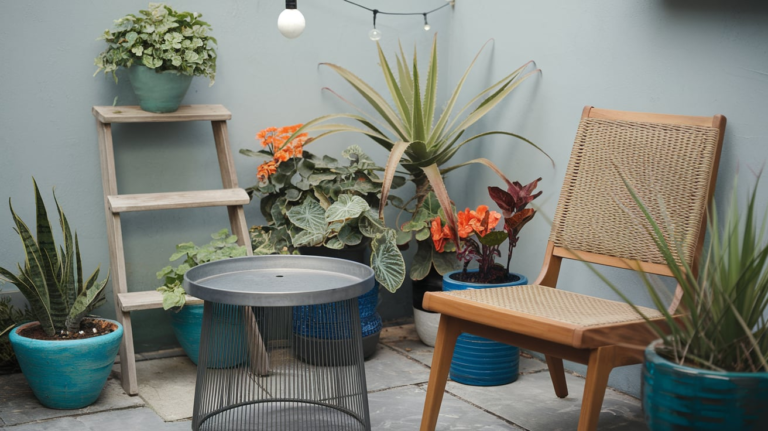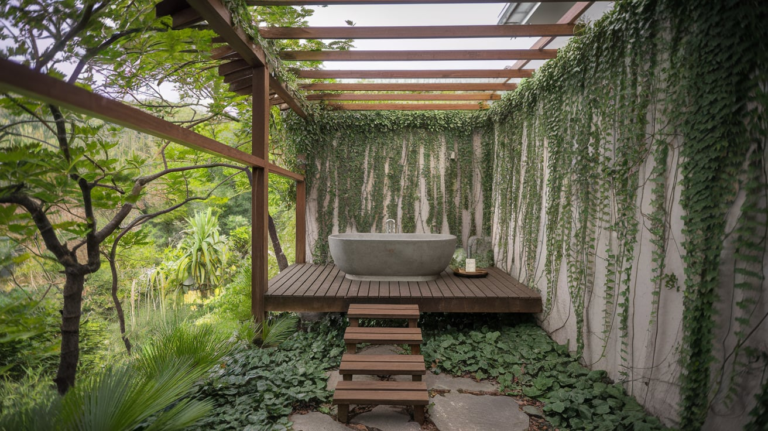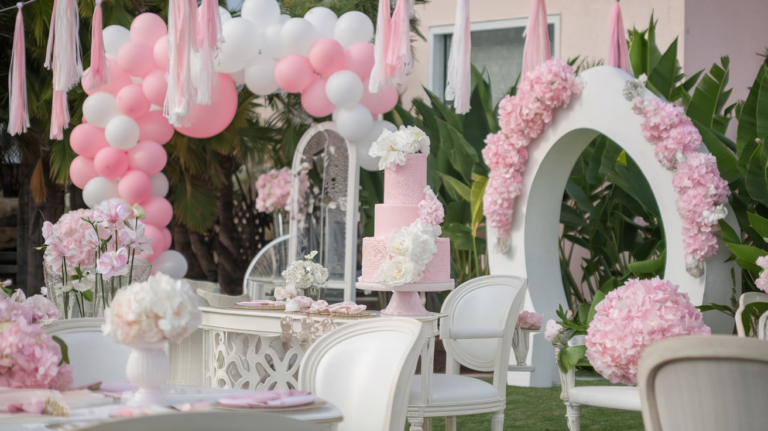22 Cottage Garden Design Ideas
Picture this: a wild tangle of blooms spilling over garden paths, bees humming like tiny troubadours, and the scent of roses and lavender hanging thick in the air. That, my friend, is the heart and soul of a cottage garden—a place where nature plays lead violin and structure takes a backseat.
Unlike manicured modern gardens, cottage gardens dance to their own rhythm, brimming with color, texture, and nostalgia. Let’s dive into 22 enchanting cottage garden design ideas that’ll make your outdoor space feel like it leaped straight out of a storybook.
1. Let Plants Spill Over the Edges
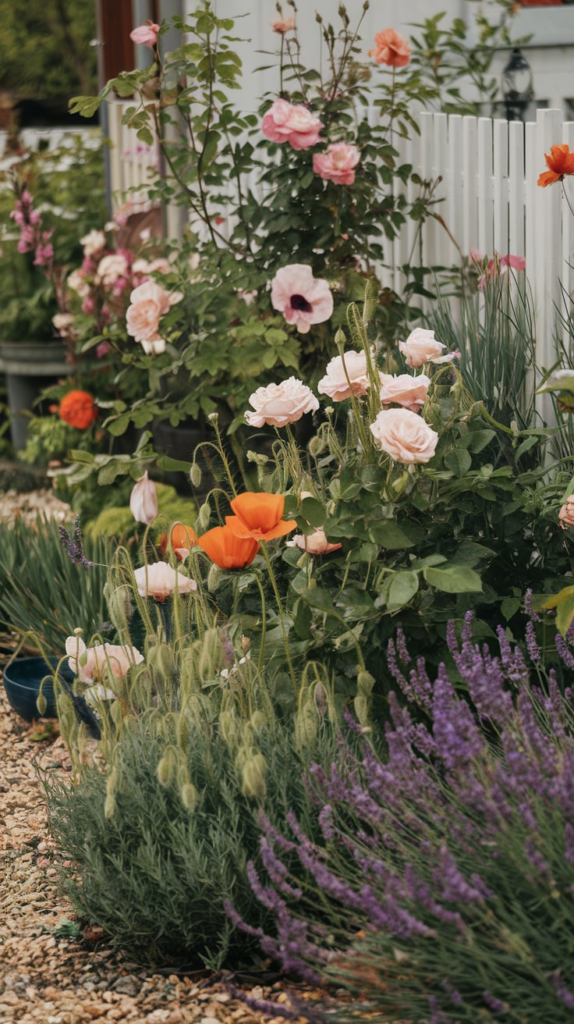
Forget tidy borders. In a cottage garden, the plants don’t stay in their lanes. Allow your lavender, catmint, and hardy geraniums to overflow their beds and soften the edges of paths and borders. This gives that romantic, unrestrained charm so vital to cottage aesthetics.
2. Mix Flowers Generously
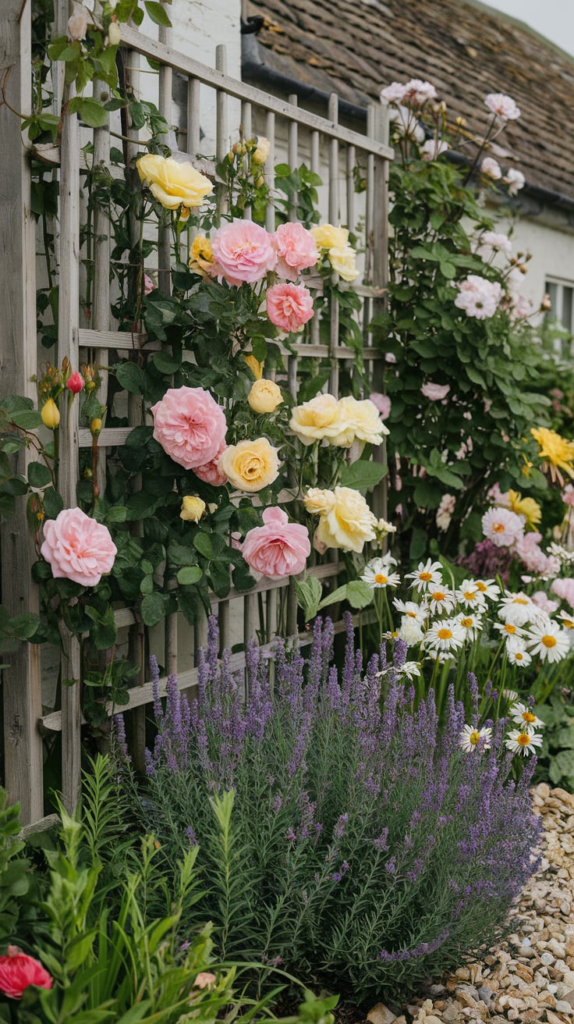
A true cottage garden is like a painter’s palette gone wild. Mix tall and short blooms, vary textures, and pair unusual colors. Think foxgloves rising through a sea of daisies or hollyhocks brushing against sweet peas. There’s beauty in the unexpected.
3. Add a Meandering Path
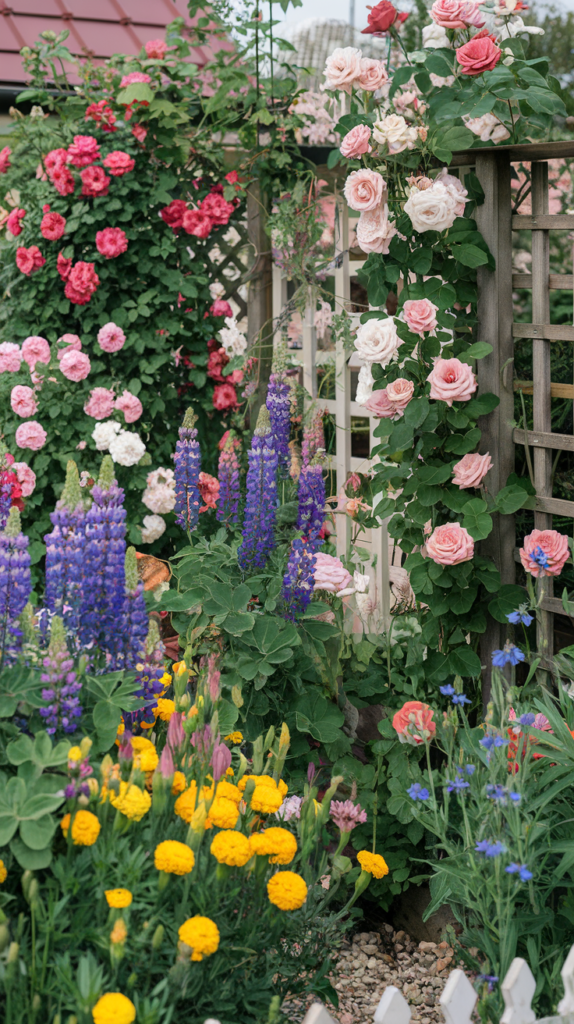
Straight paths feel too rigid. Instead, opt for a winding gravel or stepping-stone path that invites curiosity. As you walk, every turn should reveal a surprise—perhaps a rustic bench or a hidden clump of old-fashioned roses.
4. Embrace Climbing Plants
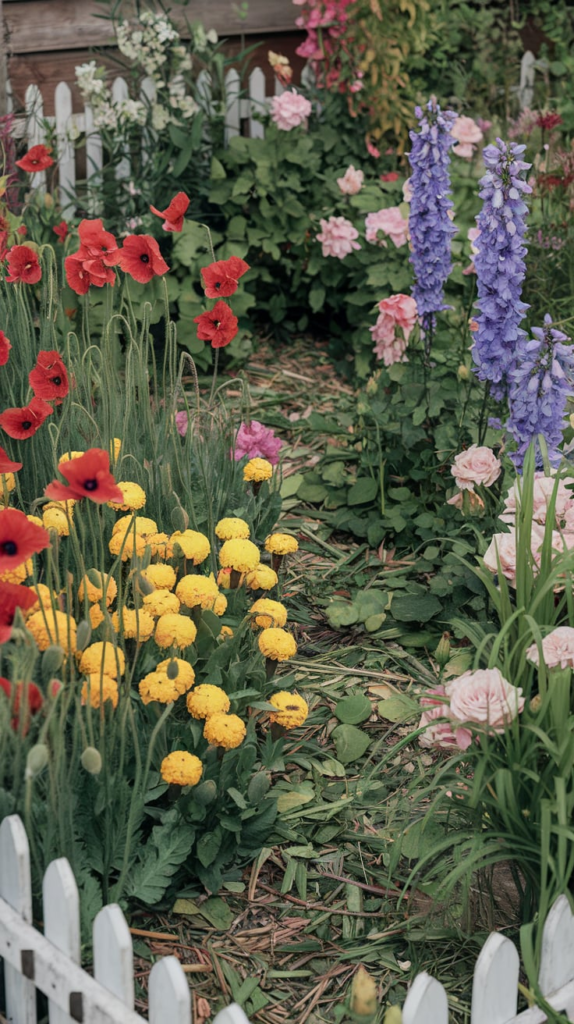
Let climbers be your vertical charmers. Clematis, climbing roses, and honeysuckle add height and drama. Let them scramble up arches, trellises, or even old garden tools. I once let a sweet pea run wild over an old bike frame—it was messy magic.
5. Use Antique and Upcycled Garden Decor
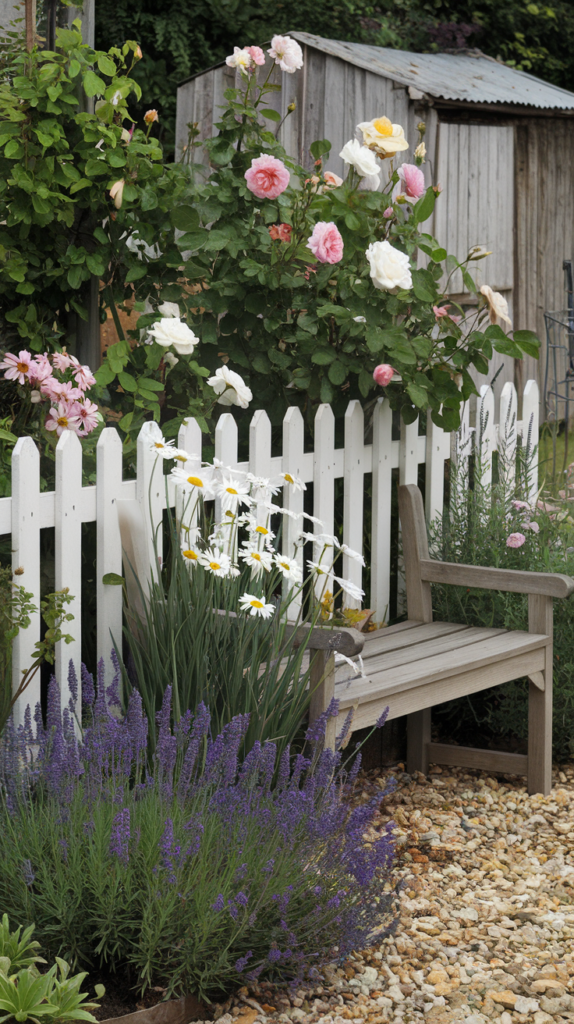
Every corner of a cottage garden should tell a story. Rusty watering cans, weathered gates, chipped birdbaths, and cracked urns add character. A friend of mine repurposed an old window frame as a focal point—it now frames a view of her favorite rosebush.
6. Plant Herbs Among Flowers
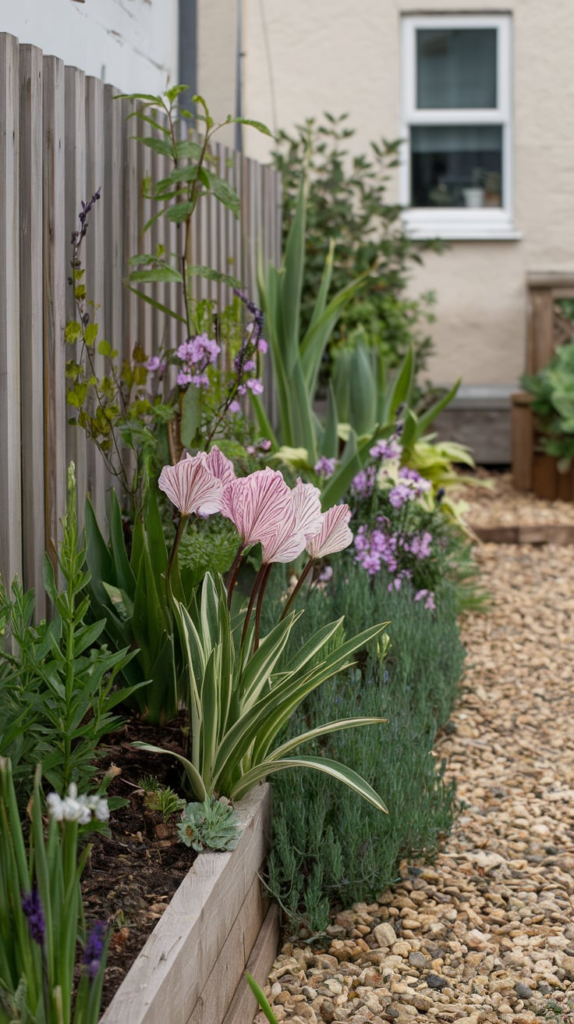
Not everything has to bloom for beauty. Thyme, chives, sage, and rosemary pull double duty—offering fragrance, structure, and kitchen utility. Let them nestle between marigolds and zinnias, like old friends whispering in corners.
7. Include a Garden Bench or Swing
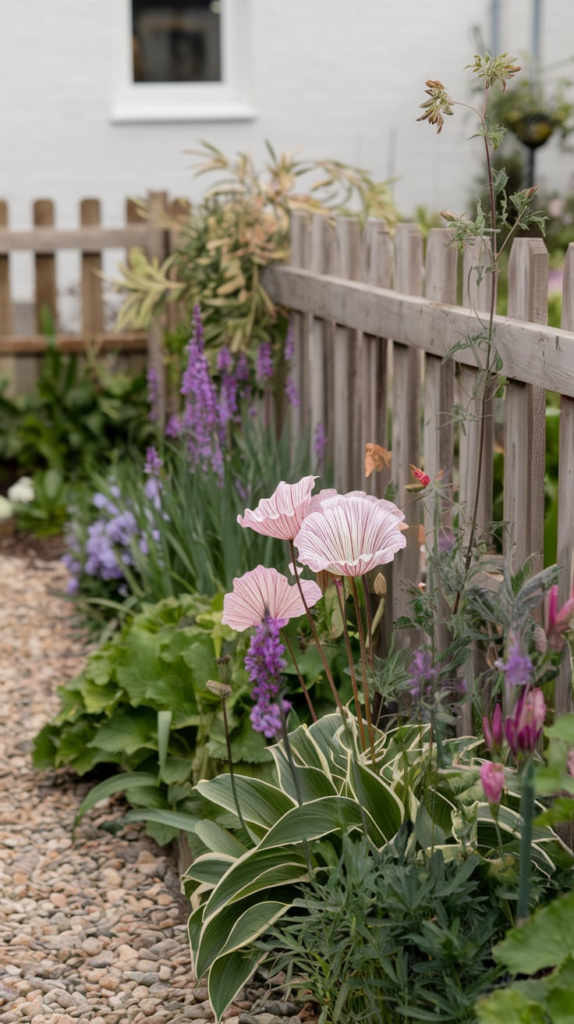
A cottage garden isn’t just to be seen—it’s to be lived in. Tuck a weathered bench beneath an arbor or hang a swing from a sturdy tree limb. These spots invite lingering and bird-watching afternoons.
8. Welcome Wildlife
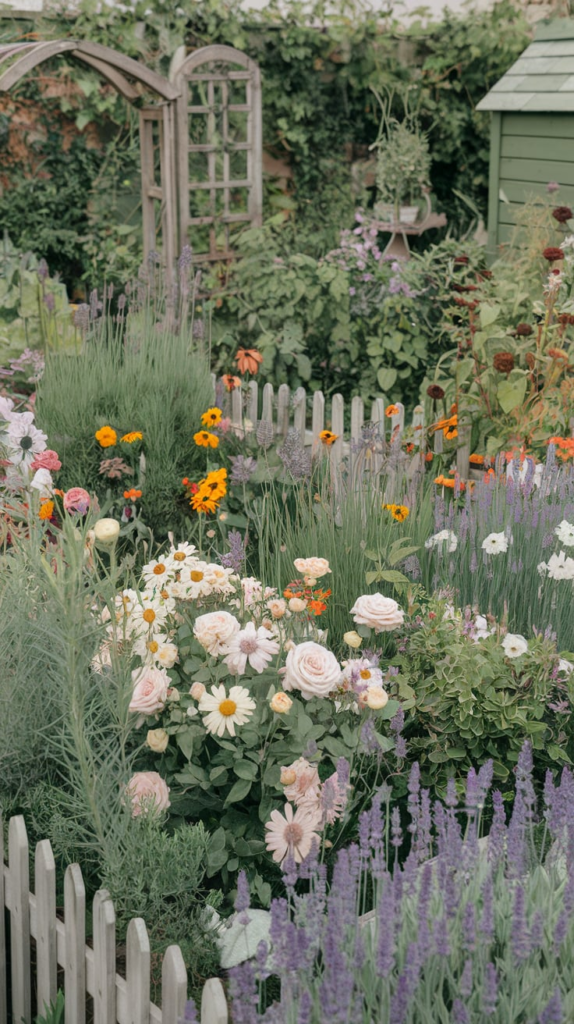
A thriving cottage garden hums with life. Include birdhouses, bee hotels, and butterfly-friendly blooms like echinacea and buddleia. I’ll never forget the morning I caught a hummingbird drinking from a delphinium—it was like nature’s standing ovation.
9. Choose Soft, Romantic Colors
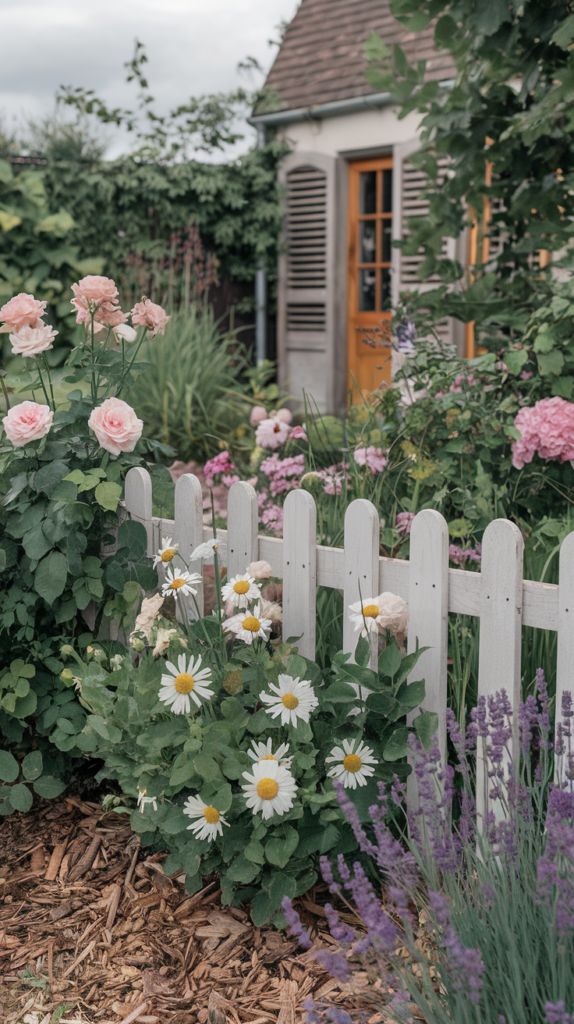
While bright cottage gardens have their charm, there’s something spellbinding about a pastel palette—think pale pinks, soft lavenders, creamy whites, and powdery blues. These hues soothe the senses and echo a vintage elegance.
10. Layer Your Planting
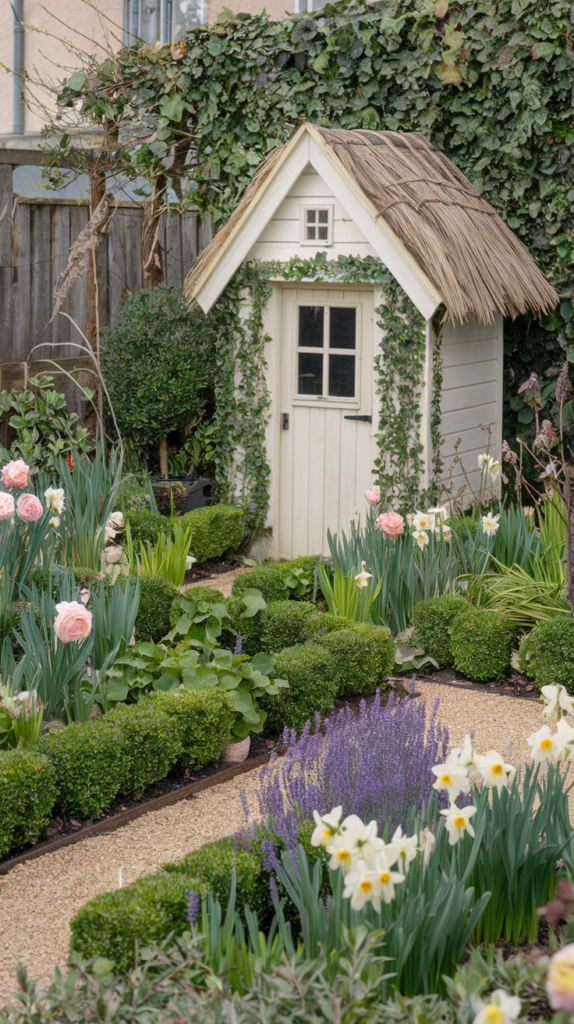
Think of your garden like a stage. Tall plants in the back, mid-sized in the middle, and low-growing ground covers in the front. This layered effect adds depth and keeps the eye engaged, like turning pages in a well-worn book.
11. Add a Focal Point
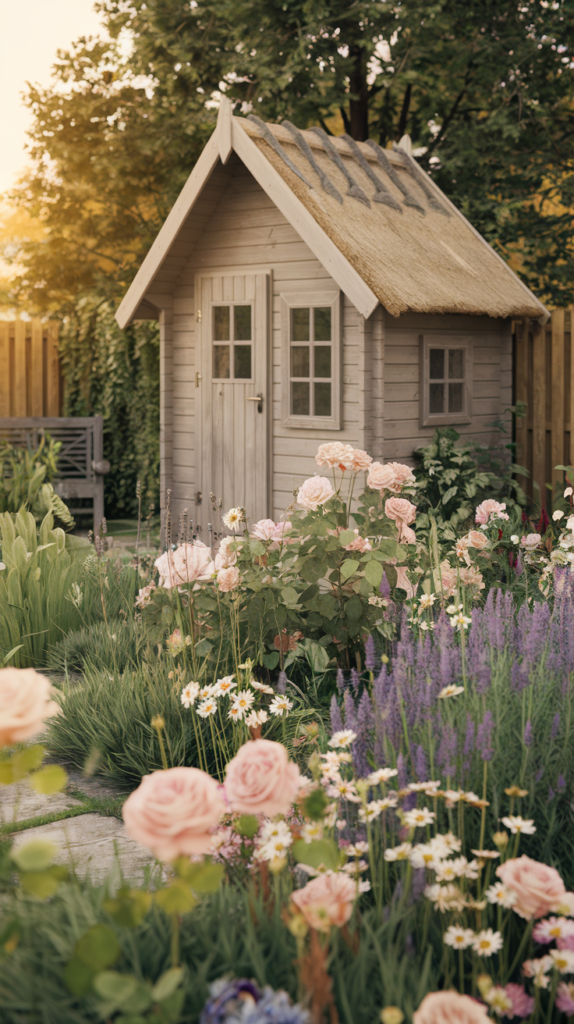
Even a free-spirited garden needs an anchor. Introduce a vintage birdbath, a rustic obelisk, a weathered statue, or a rose-covered arch. These features guide the eye and provide a moment of stillness amidst the chaos of blooms.
12. Integrate Edible Plants

Cottage gardens blur the lines between utility and beauty. Tuck in strawberries, rhubarb, lettuces, or colorful chard between your blooms. A garden that feeds both body and soul? That’s the dream.
13. Grow in Layers of Bloom Time
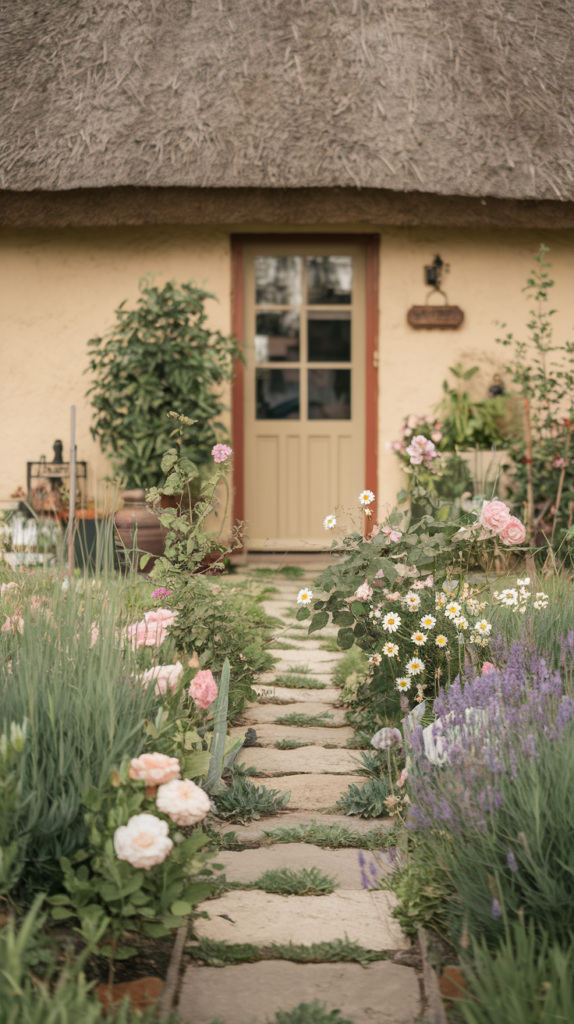
A truly magical garden never stops blooming. Mix plants that flower in early spring, summer, and even late fall. Snowdrops and tulips give way to phlox and cosmos, which pass the baton to asters and chrysanthemums.
14. Allow a Touch of Wildness
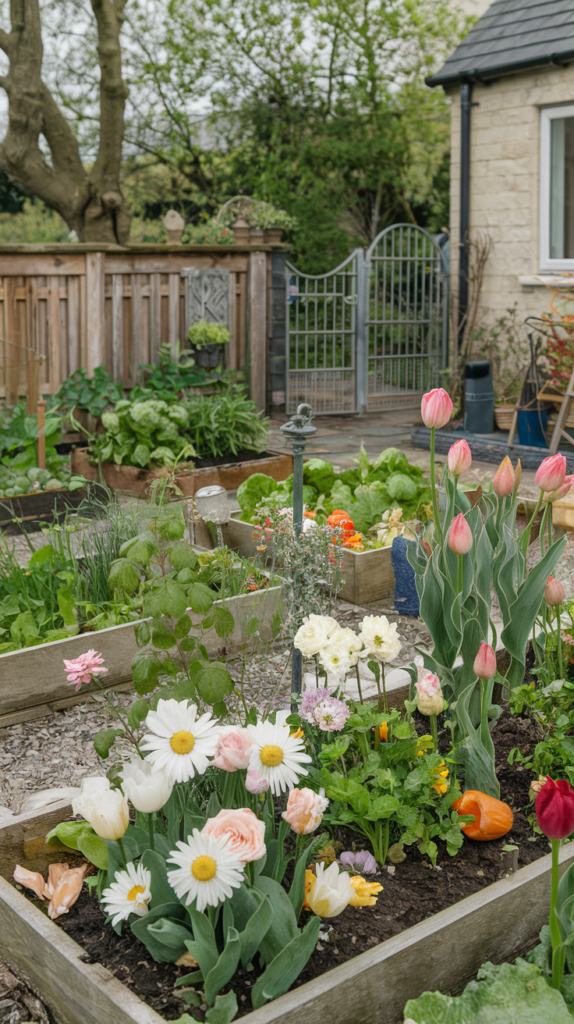
Perfection is overrated. Let certain areas go a little wild. Let self-seeders like calendula or forget-me-nots pop up where they please. That spontaneity? It’s the secret sauce of a true cottage garden.
15. Create Intimate Garden Rooms

Divide your space into smaller pockets of discovery. Maybe a rose-covered trellis leads to a hidden herb nook. These “rooms” make even small gardens feel like sprawling wonderlands.
16. Play with Textures

A successful cottage garden tickles more than just the eyes. Mix feathery astilbe with bold delphinium, velvety lamb’s ear with airy baby’s breath. The contrast of leaf shape and flower form adds richness and tactile appeal.
17. Use Natural Materials for Hardscaping
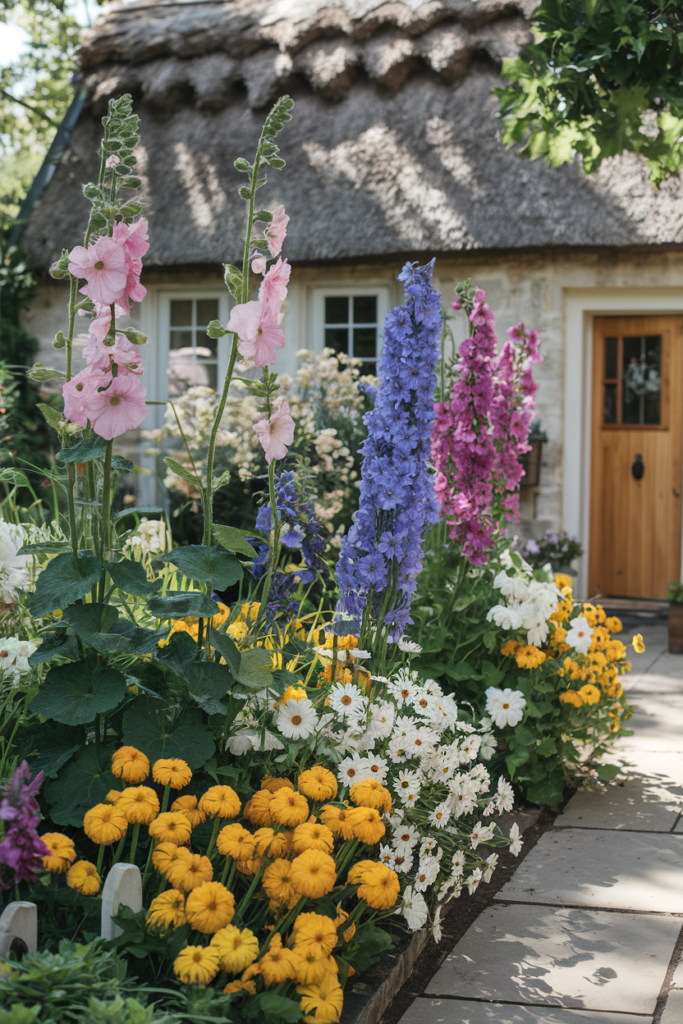
Skip the sleek concrete and opt for stone, brick, reclaimed wood, or gravel. These textures age gracefully and blend seamlessly with the organic informality of cottage plantings.
18. Include Water Features
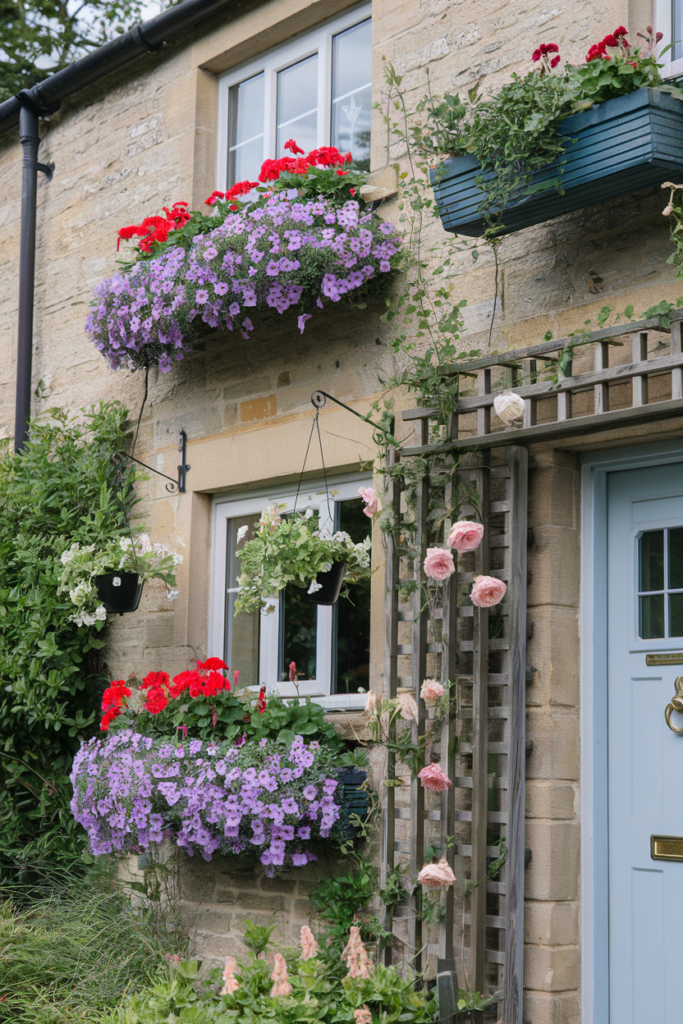
A gurgling fountain or simple birdbath adds a sensory layer. The sound of water attracts wildlife and brings a serene heartbeat to your floral symphony. I once added a tiny pond with lily pads—it became the favorite hangout for dragonflies.
19. Choose Plants with History
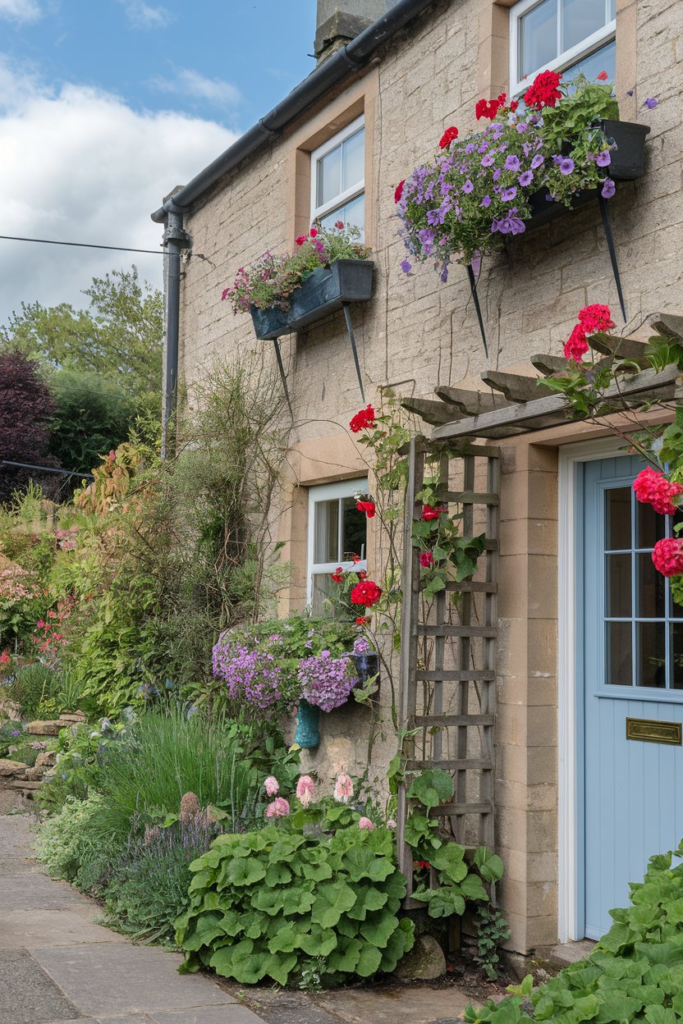
Cottage gardens are deeply nostalgic. Include heirloom varieties—old-fashioned roses, foxglove, delphinium, love-in-a-mist. These blooms carry stories from Victorian times to your backyard.
20. Use Containers Creatively

Don’t limit yourself to beds. Plant in old wheelbarrows, crates, chimney pots, or galvanized tubs. Container gardening lets you move color around and add height where needed.
21. Light It Up Gently

Cottage gardens don’t scream with spotlighting. Opt for subtle string lights, lanterns, or solar path markers. Soft lighting keeps the mood dreamy and extends the magic into the evening.
22. Make it Personal
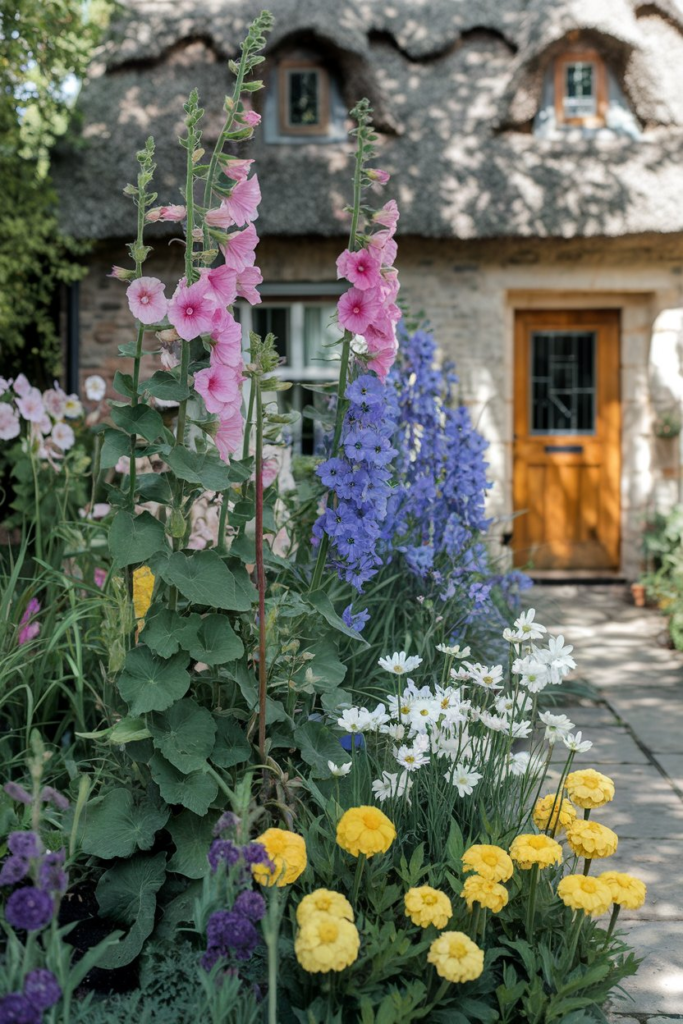
This is perhaps the most important tip. Your cottage garden should reflect your quirks, your memories, your joy. Maybe it’s a patch of your grandmother’s favorite carnations or a handmade scarecrow. These touches infuse your garden with a soul.
Conclusion
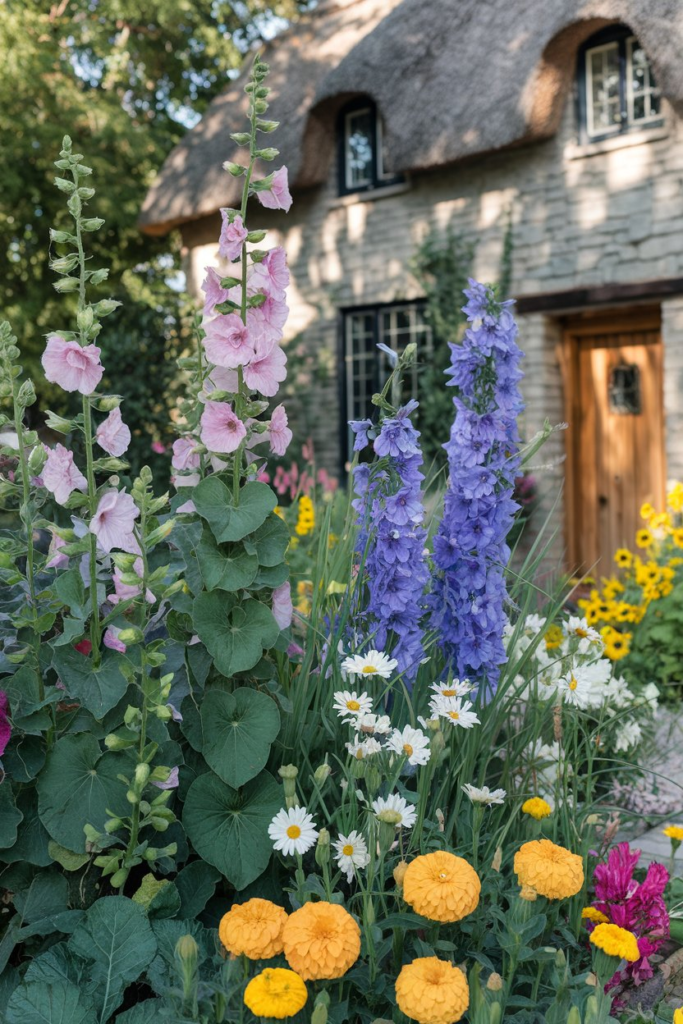
A cottage garden isn’t about rules—it’s about heart and story and the joyful chaos of nature. You’re not just planting flowers; you’re curating a little sanctuary, a poetic rebellion against the sterile and the stiff. Take your time. Experiment. Let it evolve like a favorite novel. And remember: it’s not about perfection. It’s about charm, surprise, and the kind of beauty that whispers instead of shouts. So grab your spade, dig in, and let your garden grow wild with wonder.

